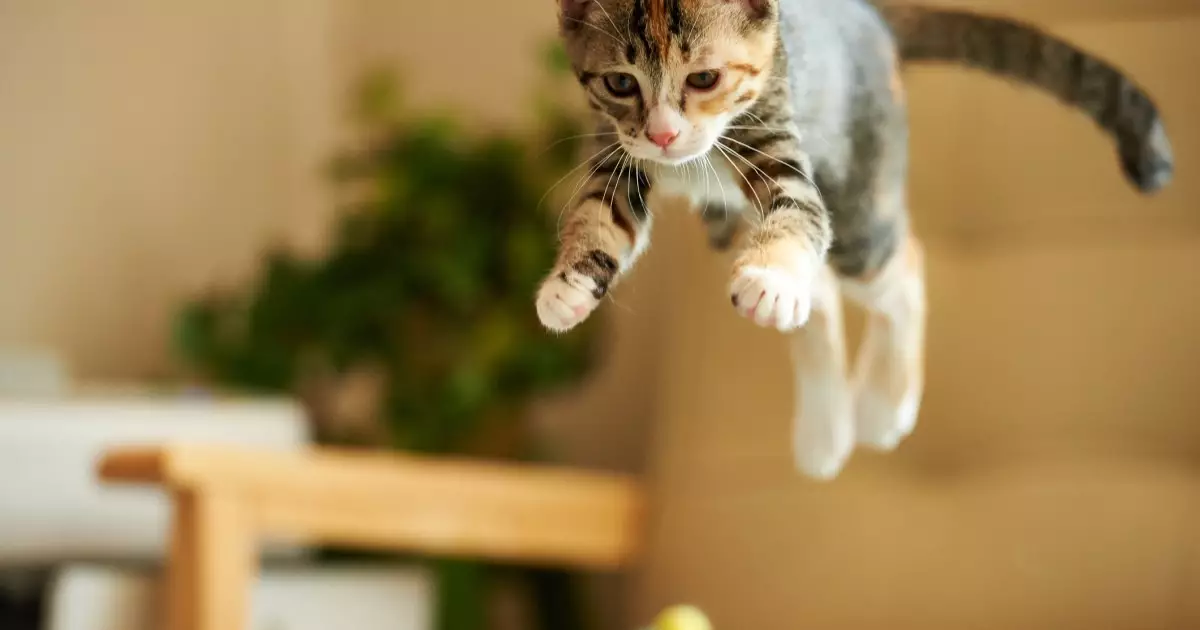Cats often charm us with their playful antics, yet some of their behaviors can be perplexing—none more so than the infamous pounce. This instinctive act can leave many feline owners scratching their heads, wondering why their kitty decides that they are the perfect target for a surprise attack. To cultivate a more enjoyable coexistence with your furry companion, it’s essential to comprehend the motivations behind this behavior. In this article, we will explore the reasons cats pounce, its ties to their natural instincts, and various approaches to modify this behavior for a healthier relationship.
At the heart of a cat’s pouncing lies a predatory instinct. Cats are pack hunters at their core, and their actions are often influenced by this innate drive. When a cat targets you for a surprise attack, it may be seeing you as part of an interactive hunting game. Especially if you’ve been moving around, casting shadows or creating swift motions, you inadvertently trigger their hunting instincts, prompting them to leap at you as they would a target in the wild.
This pouncing behavior can also be intensified if your cat feels bored or lacks sufficient mental stimulation. Household cats, particularly those without a furry playmate, might instinctively look for other ways to engage their hunting abilities—often leading to you. Thus, understanding pouncing as an expression of natural instinct helps to reframe the act from a misbehaving pet to a moment of cat-centric play.
While many cats engage in playful pouncing, sometimes this behavior can signify underlying agitation or stress. As Dr. Wailani Sung from Vet Street highlights, a cat can transfer their frustration or anxiety onto their owners, leading to unexpected pounces. If your household is filled with fast movements or chaotic activities, your cat may react by pouncing as a form of redirection. The crucial aspect here lies in observation: when does pouncing happen, and what precedes it? Such insight can direct how you respond to this behavior.
If your cat appears to be pouncing out of excitement, it may simply be seeking a game with you. In this case, learning to participate in their play can nurture a robust relationship and even lead to a better understanding between the two of you. However, if you perceive pouncing as aggressive or uninvited, addressing the behavior becomes much more urgent.
Once you determine why your cat is pouncing, it’s time to channel that energy productively. Redirecting their focus can significantly mitigate unwelcome attacks. Provide various toys that mimic the hunting experience, such as feather wands, laser pointers, and interactive puzzles. These tools serve as great distractions when your cat attempts to pounce on you, offering them an outlet for their instincts.
Creating structured play sessions can not only burn off excess energy but also reinforce the bond between you and your cat. Regular playtime will help satisfy their urges to pounce by providing them with substitutes that are both appropriate and engaging.
Setting boundaries is imperative for correcting undesired behaviors. If your cat pounces on you, respond calmly but firmly; a simple “no” can signify that this action is inappropriate. Immediately redirect their focus to toys or other activities that you find acceptable. Consistency is key here; make sure everyone in the household understands not to reward pouncing behavior, which can be reinforced inadvertently through laughter or playful reactions.
Additionally, invest in creating a stimulating environment. Cat trees, scratching posts, and puzzle feeders can immensely enrich your cat’s surroundings, decreasing boredom and the likelihood of pouncing behavior. Engage them strategically—especially before you relax or prepare for sleep, as this can tire them out and lessen unwelcome antics when you’re at rest.
If pouncing becomes problematic—leading to injuries, stressed relationships, or property damage—it may be wise to consult a professional. A veterinarian can rule out any medical concerns that might influence your cat’s behavior. If health issues are not at play, a certified animal behaviorist can provide in-depth insights tailored to your cat’s unique temperament, aiding you in fostering a peaceful home environment.
The companionship between humans and cats should be a source of joy. By exploring the motivations behind pouncing and employing thoughtful strategies to address it, you can transform potential conflicts into rewarding interplay, ensuring that both you and your cat enjoy a harmonious, playful bond for years to come.


Leave a Reply